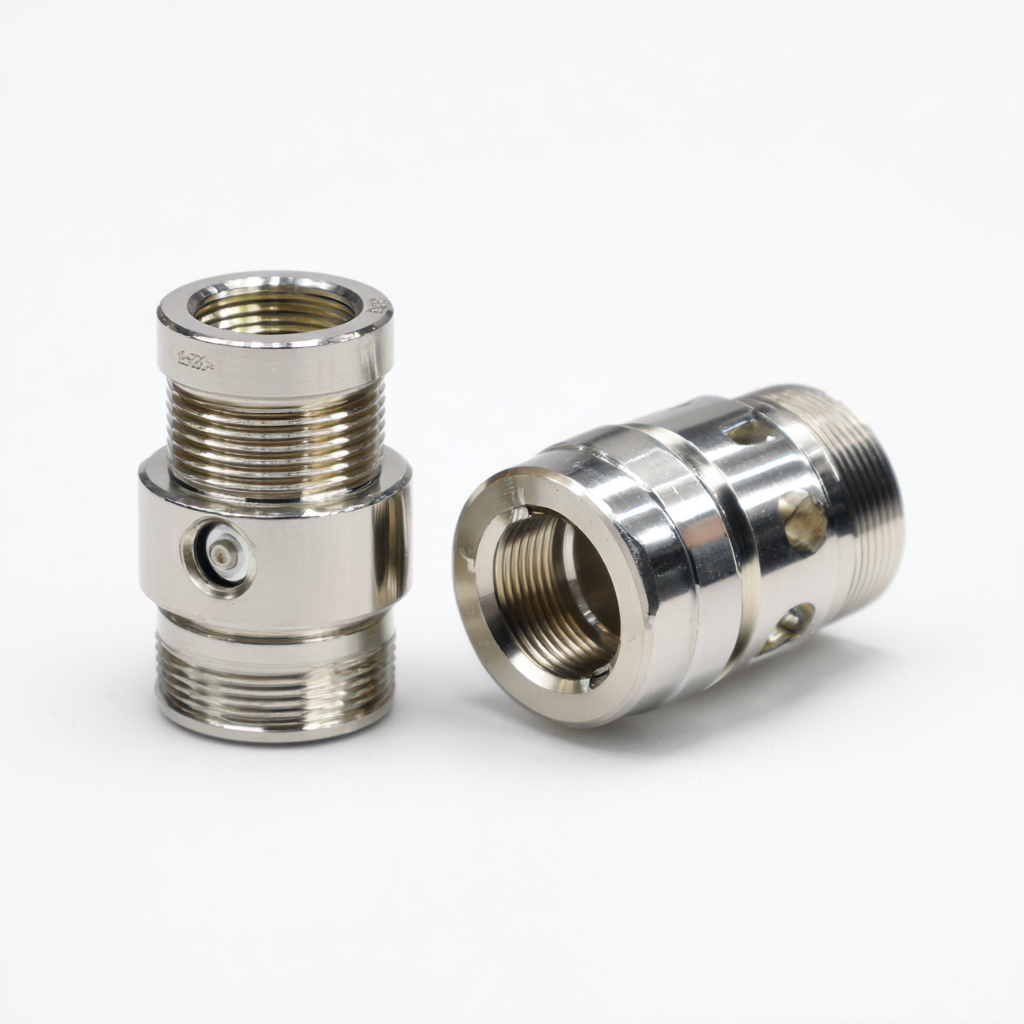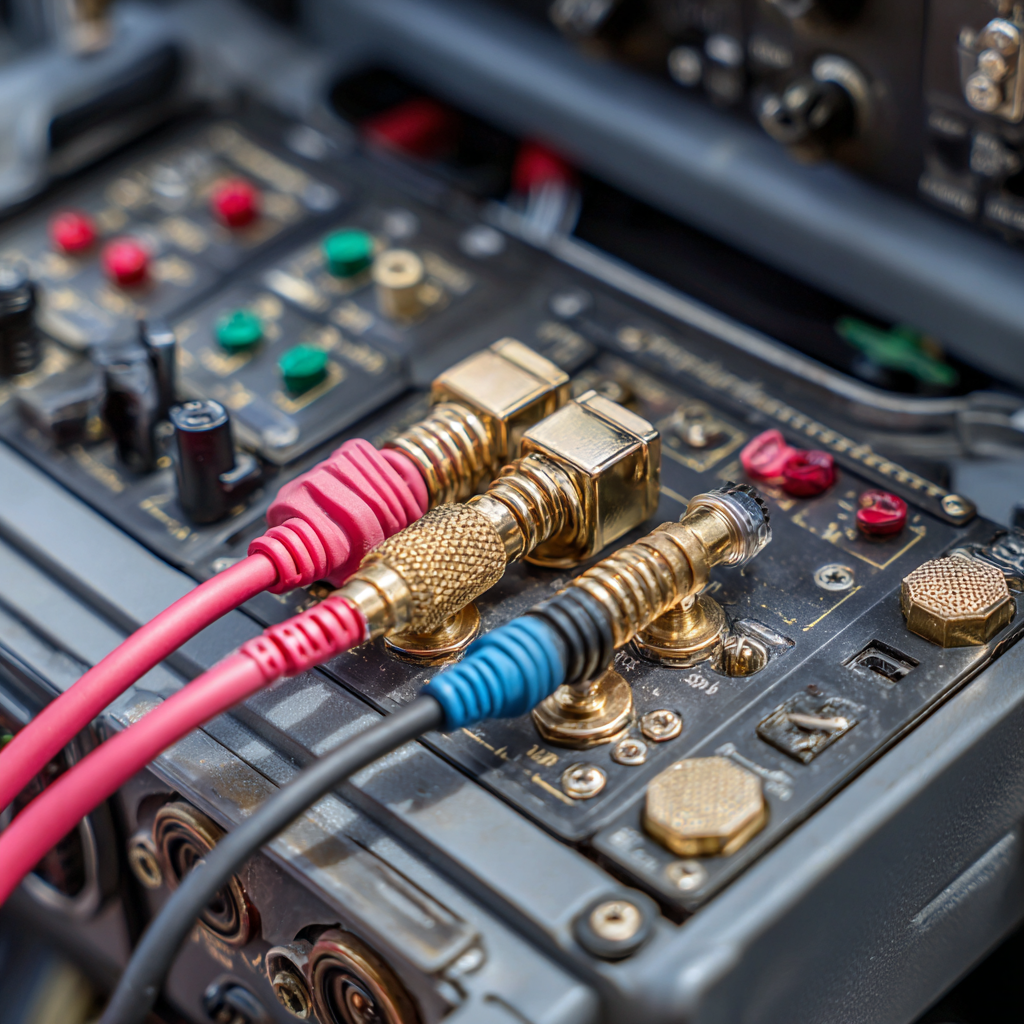
In the ever-evolving aviation industry, the integration of advanced technology is paramount for enhancing aircraft performance. According to the latest forecasts by the International Air Transport Association (IATA), global air passenger numbers are set to reach 8.2 billion by 2037, which impacts the demand for reliable and efficient aviation infrastructure. Among the critical components that contribute to this efficiency are aviation connector accessories. These accessories ensure seamless connectivity for various aircraft systems, enhancing both safety and operational effectiveness.

A recent market analysis by MarketsandMarkets predicts that the global aviation connector market will grow from USD 1.3 billion in 2020 to USD 2.5 billion by 2025, driven by the increasing demand for lightweight and high-performance materials. In this blog, we will explore the seven best aviation connector accessories that not only meet the current performance standards but also set the stage for the future of aviation technology, aligning with the 2025 industry trends.
In the realm of aviation, the efficiency and reliability of systems are paramount, and a significant factor contributing to these attributes is the quality of connectors used in aircraft. High-performance aviation connectors are designed to withstand extreme conditions while ensuring seamless connectivity within various aircraft systems. These top-quality connectors play a crucial role in enhancing overall aircraft performance, from avionic systems to navigation and power distribution.
Emphasizing efficiency, these connectors minimize signal loss and improve data transfer rates, which are vital for modern aircraft where rapid communication is essential. Utilizing advanced materials and innovative designs, they provide superior resistance to vibrations, corrosion, and temperature fluctuations. This not only boosts the reliability of the systems but also contributes to reduced maintenance costs and downtime, making them an indispensable component for any aviation-focused operation. By prioritizing the use of high-quality connectors, aircraft operators can significantly enhance the functionality and safety of their fleets.
In the aviation industry, the importance of robust wiring cannot be overstated. Reliable wiring systems are the backbone of any aircraft, ensuring that critical information and power are seamlessly transmitted throughout the aircraft's components. When these wiring systems are compromised, it can lead not only to dips in performance but also to potential safety hazards. This is why choosing high-quality aviation connector accessories is essential; they serve as the crucial link between various systems, ensuring they function as intended under the demanding conditions of flight.
Investing in the right aviation connector accessories enhances aircraft performance and significantly improves safety protocols. Advanced connectors protect against environmental factors such as moisture, vibration, and extreme temperatures. By utilizing accessories designed to match specific requirements, aircraft operators can minimize electrical failures, reduce maintenance costs, and increase the lifespan of their wiring systems. In this way, robust wiring not only contributes to the overall efficiency of aircraft but also safeguards crew and passenger safety, making it a priority for anyone involved in aviation.
In the ever-evolving aviation industry, innovative connector accessories play a pivotal role in optimizing aircraft maintenance and enhancing performance. The integration of advanced technology and predictive logistics has become essential. By utilizing state-of-the-art connector accessories, operators can improve the reliability and efficiency of their aircraft systems. One significant development is the introduction of systems that provide health monitoring for drive trains and engines, which streamline maintenance schedules and improve serviceability.
When incorporating these accessories, consider the following tips: First, ensure compatibility with existing aviation systems to avoid integration challenges. Second, regularly update your maintenance software to leverage new features that support predictive maintenance analytics. These practices not only enhance aircraft performance but also reduce costs over time by minimizing unplanned downtimes.
Furthermore, the growing aviation software market is indicative of the industry's shift towards data-driven solutions. By investing in innovative maintenance technology, operators can harness the power of AI for design optimization and predictive insights, making their fleets more resilient in the face of increasing complexity and operational demand.
| Accessory Name | Type | Material | Weight (lbs) | Advantages |
|---|---|---|---|---|
| Connector Plug | Electrical | Composite | 0.5 | Durability and lightweight design |
| Connector Housing | Mechanical | Aluminum | 1.2 | Corrosion resistance |
| Sealing Gasket | Sealing | Rubber | 0.1 | Prevents leaks and contamination |
| EMI Shielding | Protection | Copper | 0.3 | Reduces electromagnetic interference |
| Connector Pins | Electrical | Brass | 0.02 | High conductivity and durability |
| Cable Assembly | Electrical | PVC | 1.0 | Flexible and easy to install |
| Protective Cover | Protective | Silicone | 0.4 | Protection against environmental factors |
When it comes to aviation connectors, customization is key to achieving optimal performance tailored to specific needs. Different aircraft and their distinct systems require connectors that can withstand unique environmental challenges. For instance, when selecting connectors for high-altitude flights, consider accessories that enhance insulation and protect against extreme temperatures. Tailoring the materials used for connectors and their accessories can help ensure longevity and reliability in varied conditions.
Tip: Always assess the environmental factors your aircraft will encounter. This can range from humidity levels to exposure to chemicals, which influence your choice of connector materials and accessories. Doing this not only boosts performance but also reduces maintenance downtime.
Another important customization option is the modular design of connectors, allowing for easy adaptability as systems evolve or require upgrades. By opting for modular connectors, you can seamlessly integrate new technologies as they emerge, ensuring your aircraft remains at the forefront of aviation performance.
Tip: Keep an eye out for connectors that offer interchangeable parts or attachments, making it simpler to adapt to future automotive demands without requiring a complete system overhaul. This proactive approach keeps you ahead of the curve and maximizes the longevity of your components.

In the world of aviation, optimizing aircraft performance is crucial for safety and efficiency. Real-world applications of advanced aviation connector accessories have demonstrated remarkable success in enhancing functionality. For instance, a regional airline recently upgraded its fleet with high-quality connectors that improved electrical connectivity and reduced maintenance costs. As a result, the airline reported fewer in-flight electrical failures, leading to greater operational reliability and passenger satisfaction. These connectors facilitate seamless communication between various aircraft systems, ensuring that pilots receive real-time data essential for flight operations.
Another compelling success story comes from a cargo airline that integrated advanced connector accessories into their loading equipment. By adopting connectors designed to withstand harsh environments, they significantly minimized downtime caused by equipment failures. With enhanced durability and performance, the airline could ensure timely deliveries, even during adverse weather conditions. This change not only streamlined their operations but also strengthened their reputation in the competitive logistics market. Such examples highlight the transformative impact that the right aviation connector accessories can have on aircraft functionality and overall operational efficiency.

